The hypoglycemic potential of phenolics from functional foods and their mechanisms
2023-01-03OksanaGolovinskaiaChinKunWang
Oksana Golovinskaia, Chin-Kun Wang*
Department of Nutrition, Chung Shan Medical University, Taiwan 402, China
Keywords:Phenolics Functional foods Hypoglycemia Insulin resistance Insulin secretion
A B S T R A C T Long-term postprandial hyperglycemia is a primary risk factor for developing chronic metabolic diseases such as obesity, type 2 diabetes, and cardiovascular disease. Chronic hyperglycemia induces the glycation of proteins, oxidative stress, inflammation and increases plasma insulin and lipid concentrations. Insulin resistance is the primary cause of postprandial excursions of blood glucose and lipids. Hyperglycemia can be treated by lowering dietary carbohydrates intake, digestion, and absorption. Various functional foods improve glucose metabolism by increasing insulin sensitivity and inhibiting α-glucosidase in the small intestine.Natural phytochemicals, especially active phenolics are good antioxidants and show anti-inf lammatory action and regulate blood glucose. This review aimed to report on hypoglycemic properties of active phenolics from functional foods and their proposed anti-diabetic mechanisms. Nevertheless, further clinical trials are required to conf irm the bioavailability, safety, and eff icacy of phenolics, especially the dosage and duration of treatment, to avoid adverse effects and give better dietary recommendations.
1. Introduction
Diabetes mellitus is a metabolic disorder owing to the poor regulation of blood glucose. This might influence various organs(heart, vascular, eye, neuron) and lead to numerous life-threatening complications or even death [1,2]. Prolonged postprandial blood glucose levels (hyperglycemia) are one of the major independent risk factors for developing type 2 diabetes (T2DM) [3]. Hyperglycemia is the result of impaired glucose regulation including reduced insulin secretion, decreased glucose utilization, and increased glucose production. Insulin is the most important regulator of glucose homeostasis [4,5]. Peripheral insulin resistance and abnormal insulin secretion leads to hyperglycemia, brain insulin resistance is associated with neuronal dysfunction and cognitive impairment in Alzheimer’s dementia [6]. People with postprandial hyperglycemia, pancreatic β-cells decline insulin secretion after food ingestion and glucagon release is less inhibited. Thus, more glucose enters the circulation,which leads to prolonged plasma glucose increases [7,8]. Glucose homeostasis is shown in Fig. 1.
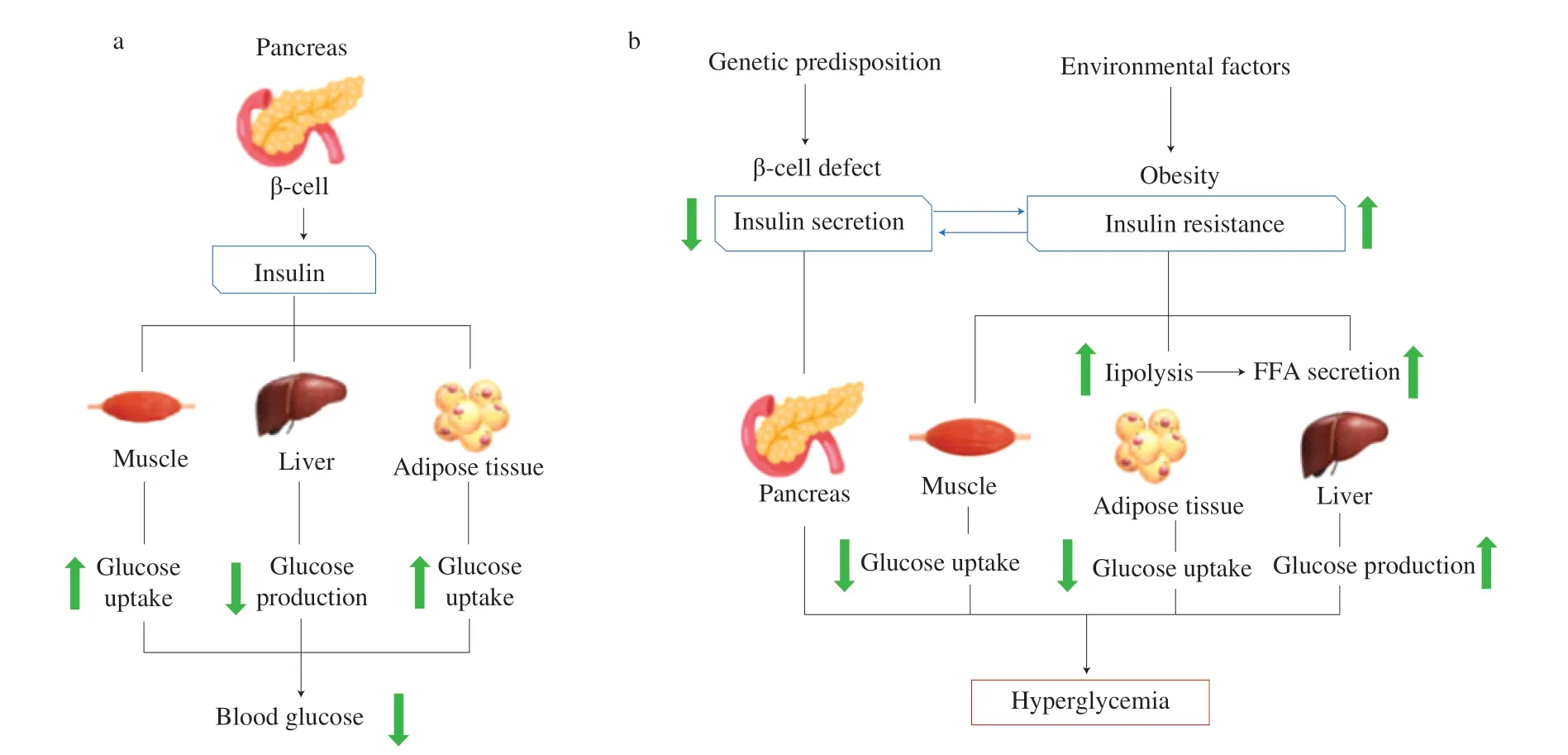
Fig. 1 Glucose homeostasis. (a) Normal function of insulin pathway when balancing hepatic glucose production and peripheral glucose uptake and utilization -after meal, when the blood glucose level is high, insulin is released from the pancreatic β-cells to stimulate glucose uptake in the muscle and adipose tissuesand promote glycogenesis in the liver. (b) Hyperglycemia displays when insulin secretion cannot offset insulin resistance. Skeletal muscle, liver, and adipose tissues primarily demonstrate insulin resistance. The insulin resistance promotes impaired glucose uptake into skeletal muscle and impaired inhibition of glucose production in the liver, with following increases in blood glucose levels. In the adipocytes are disturbed lipolysis and enhanced delivery of free fatty acids. Fattyacids accumulate in the skeletal muscle, liver, and pancreas and promote insulin resistance, raised hepatic glucose production, and impaired β-cell function.
Chronic postprandial hyperglycemia is one characteristic feature of insulin resistance and can induce oxidative stress, formation of advanced glycation end products (AGEs), and lipid peroxidative products,leading to endothelial dysfunction, dyslipidemia, and expression of inflammatory genes [9,10]. Postprandial hyperglycemia occurs after a high carbohydrate’s meal due to hydrolysis of starch by digestive enzymes (α-amylase andα-glucosidase) and glucose absorption inthe small intestine. Postprandial hyperglycemia can be improved by suppressingα-amylase orα-glucosidase in the digestive tract.These enzyme inhibitors reduce the glucose uptake and consequently prevent an excessive rise of postprandial blood glucose [11].Previous studies show that lowering postprandial glucose could be recommended as the treatment for T2DM [12-14]. Most hypoglycemic drugs are adequate for the treatment of diabetes but have adverse effects and the drawback of drug resistance [15]. Thus, searching for new natural hypoglycemic compounds to facilitate glucose uptake is needed. Studies confirm that some functional foods and medicinal plants effectively inhibitα-glycosidase andα-amylase and thus may prevent the development of diabetes [12,16,17]. Natural products show their numerous pharmacologically active components, such as phenolics, reduce hyperglycemia by improving insulin resistance and inhibitingα-glucosidase in the small intestine. Many of them exhibit antioxidative, anti-inflammatory activities [18,19].
Gut hormones like glucagon-like peptide-1 (GLP-1) and glucosedependent insulinotropic polypeptide (GIP) also play an important role in pancreatic β-cell function. Hormones are responsible for glucose removal by stimulating insulin release from the pancreas. The dipeptidyl peptidase-4 enzyme (DPP-4) inactivates and breaks down GLP-1 and GIP. DPP-4 is inhibited by polyphenols, which can lower glucose levels by increasing insulin secretion and reducing glucagon secretion. Therefore, polyphenols can help control blood sugar levels and prevent hyperglycemia [20,21].
T2DM and insulin-resistant states are associated with disturbances in the metabolism of glucose in the liver and an inability of the liver to respond to insulin, resulting in severe defects in glucose homeostasis that cause hyperglycemia and increased hepatic glucose output [22]. Several studies have shown that polyphenol-rich diets improve glucose metabolism in the liver [23-25].
Prolonged hyperglycemia leads to dysfunction of the pancreatic β-cells, insulin resistance, impaired insulin secretion,and finally apoptosis of β-cells [26]. Phenolics compounds indicate beneficial impacts on β-cell function and insulin releasein vitroandin vivo[27-29].
Phenolics compounds can be divided into flavonoids and nonflavanoid groups. Flavonoids are consisting of six groups: flavonols,flavones, flavan-3-ols, flavanones, isoflavonoids, and anthocyanins.The major non-flavonoids are phenolic acids, stilbenes, lignans, and tannins [30].
In the present review, we identified the most potential polyphenols from functional foods that can induce hypoglycemic effects across different hyperglycemic pathological pathways (Fig. 2).
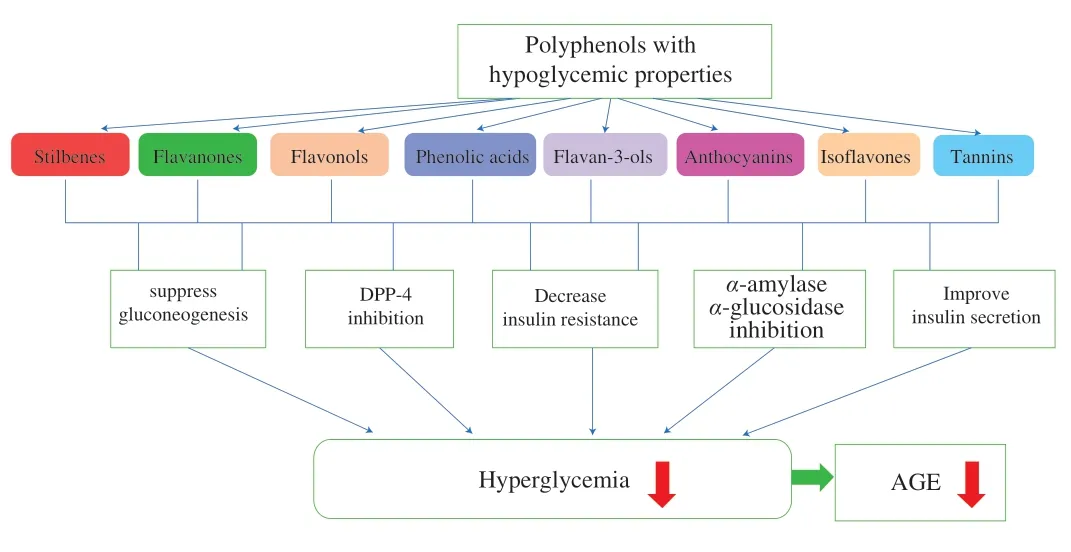
Fig. 2 Polyphenols and their hypoglycemic pathways of hyperglycemia.
Flavanones-naringin and hesperidin (Fig. 3) present in fruits and vegetables exhibit anti-diabetic activity, promote glycogen synthesis,and reduce expression of phosphoenolpyruvate carboxykinase(PEPCK) and glucose-6-phosphatase (G6P), thereby repressing gluconeogenesis. Additionally, hesperidin strongly inhibits the enzyme DPP-4 [31,32].
Flavonol-quercetin (Fig. 4a) is a compound in onions, apples, and berries. Quercetin from berry improves glucose uptake in myoblasts,enhances insulin sensitivity by activating the AMPK-signaling pathway, and also improves insulin resistance in hepatic cells [33,34].Moreover, quercetin shows high suppression ofα-glucosidase [35],stimulates insulin secretion by increasing Ca2+influx [36], and has anti-glycation properties [37].

Fig. 3 Chemical structure of (a) naringin, (b) hesperidin.
Tannins such as hydrolyzable tannins (ellagitannins) (Fig. 4b)from berries exhibit inhibition ofα-amylase [38], while phlorotannins of algae inhibit the activities ofα-glucosidase andα-amylase,improving postprandial hyperglycemia, and insulin sensitivity [39,40](Fig. 4c). Persimmon tannin suppressesα-glucosidase and reduces postprandial blood glucose levels [41].
Flavan-3-ols include epigallocatechin gallate (EGCG),(+)-catechin, (-)-epicatechin, and proanthocyanidins (procyanidin B2)(Fig. 5).
Procyanidin B2, (-)-epicatechin, and (+)-catechin apple,cinnamon, grape and chocolate significantly reduced insulin resistance in T2DM subjects [42-45]. EGCG in green tea lowered insulin resistance, improved glucose uptake [46]. Moreover, EGCG decreases glucose production by inhibiting the expression of PEPCK and G6P [24]. Proanthocyanidins (cacao, black soybean seed coat,grape seeds) improve glucose uptake and limit glucose output,raising hepatic glucokinase activityin vitrostudies [47]. Moreover,proanthocyanidins reduce G6P [48,49].
Soy isoflavonoids: genistein and daidzein (Fig. 6) increases insulin sensitivity and glucose uptake into muscles [50]. Furthermore,isoflavonoids improves β-cell function and insulin secretion [27,51,52].

Fig. 6 Chemical structure of (a) genistein, (b) daidzein.
Resveratrol (Fig. 7a) significantly reduced blood glucose, lowered hepatic gluconeogenic enzyme activity, and hepatic glycogen in mice [53].
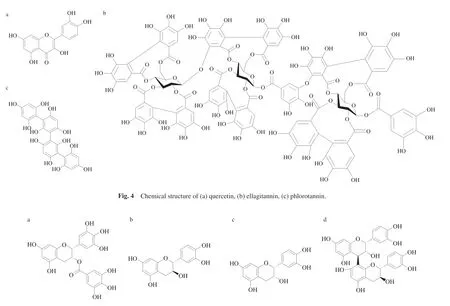
Fig. 5 Chemical structure of (a) EGCG, (b) (+)-catechin, (c) (-)-epicatechin, (d) procyanidin B2.
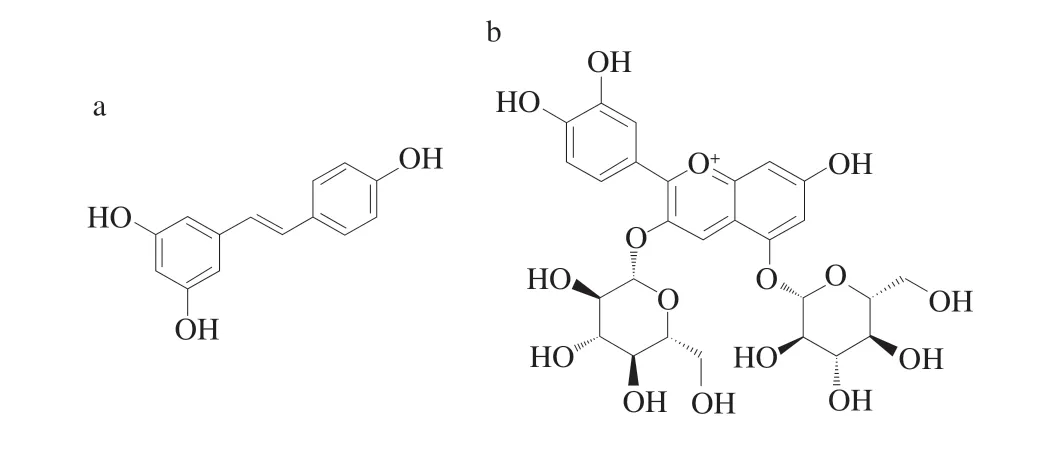
Fig. 7 Chemical structure of (a) resveratrol, (b) cyanidin-3,5-O-diglucoside.
Anthocyanins from berries increase glucose uptake, improve insulin sensitivity [54,55], and enhance insulin release from pancreatic β-cells [29], improve insulin resistancein vivostudy [56-58].Moreover, anthocyanins act asα-glucosidase inhibitors [38,59].Anthocyanins from black bean and cyanidin-3,5-O-diglucoside (aronia juice) exhibit inhibition on DPP-4 [60,61]. Anthocyanins from purple potato stimulated insulin secretion in mouse beta cells [62].
Phenolic acids include chlorogenic acid, ferulic acid,p-coumaric acid, quinic acid, cinnamic acid and vanillic acid (Fig. 8). Phenolic acids are present in fruits, vegetables, spices, berries and grains [63].

Fig. 8 Chemical structure of (a) chlorogenic acid, (b) ferulic acid,(c) p-coumaric acid, (d) quinic acid, (e) vanillic acid, (f) cinnamic acid.

Fig. 9 The mechanism of polyphenols on glucose uptake. (a) Normal insulin signaling way, insulin connects to insulin receptor (IR), inducing autophosphorylation of IR leading to phosphorylation of insulin receptor substrate (IRS). IRS proteins activate PI3K/Akt pathway, which in the skeletal muscle and adipose tissue induces 5’-adenosine monophosphate-activated protein kinase (AMPK) and AS160 phosphorylation and the expression of GLUT4 and its translocation from intracellular vesicles to the cell membrane and triggers the uptake of glucose; (b) Impaired insulin signaling, insulin resistance disturbances the activation of PI3K/Akt of the skeletal muscle and adipose tissue leading to a reduced GLUT4 expression and translocation, resulting in impaired glucose uptake;(c) Impacts of phenolics compounds on impaired insulin signaling. Phenols lower insulin resistance by various mechanisms: induce IR and IRS phosphorylation and activate PI3K/Akt pathway and AMPK, improving GLUT4 translocation in skeletal muscle and adipose tissues. Blue arrow shows the next step of the process,cross shows the disruption of the process, green arrow shows phenolic compounds targeting various pathways.
Coffee chlorogenic acid improves hyperglycemia, insulin resistance [64-67] and lowers the glucose absorption [68]. Ferulic andp-coumaric acids from whole cereals suppressα-glucosidase [35,69].Moreover, ferulic acid improves insulin sensitivity and hepatic glycogenesis but inhibits gluconeogenesis in type 2 diabetic rats [70].Cinnamic, quinic and vanillic acid significantly enhanced glucosestimulated insulin secretion [71-73].
Raimundo et al. [74] conducted a meta-analysis of interventional studies and concluded that the consumption of polyphenols may contributes to lower glucose levels in individuals with T2DM or risk of diabetes and these compounds may also act in combination with anti-diabetic drugs. The control of postprandial hyperglycemia is important in the prevention and management of T2DM. The beneficial effects of fruits, vegetables, nuts, and cereals consumption attribute to polyphenols, which have beneficial effects on human health by improving glucose and lipid metabolism in the liver, adipose, and skeletal muscle cells. The impact of polyphenols on insulin resistance is investigatedin vitroandin vivousing extracts and functional products rich in polyphenols [75-78].
Phenolic possess antidiabetic action due to improving the insulin action in skeletal muscle and liver cells, decreasing the plasma free fatty acid levels and hepatic gluconeogenesis, and increasing glucose uptake [79]. In the intestine, flavonoids inhibit the digestion of starch and reduce glucose absorption across the membrane [80]. Metaanalysis of prospective cohort studies indicates substantial evidence of dietary intakes of flavonols, flavonols, flavan-3-ols, and isoflavones containing foods to reduce the risk of T2DM [81].
Functional foods contain phenolic compounds that may provide health benefits, but their low bioavailability in the gastrointestinal tract limits their activity and health benefits [82].
Some phenolic compounds can demonstrate significantly different bioactivitiesin vitrocompared toin vivo, which is explained by their lower bioaccessibility during digestion. Bioaccessibility is defined as the level of active compounds released from food and potentially absorbed or available to the body through digestion. Low bioaccessibility can occur due to poor stability in aqueous solutions and in the gastrointestinal tract, and challenging absorption [83].Thus, the bioavailability of the metabolites of a compound can be completely different from the original compound. Therefore, more data from human clinical trials are needed to study the bioavailability of polyphenols.
This review paper discusses the hypoglycemic properties of active phenolics from functional foods and mechanisms of action on hyperglycemia. Functional foods were selected with proven hypoglycemic effects usingin vitroandin vivomodels. Foods are a very complex system and have many bioactive compounds to impact hyperglycemia in different ways. Thus, the same foods had various mechanisms of action on hyperglycemia and can be presented in varied sections of this review paper.
2. Data collection
The authors of this comprehensive review article carried out a literature search for relevant articles regarding the active phenolics in functional foods and their hypoglycemic properties by determining sources or literature in the form of primary data or books and national or international journals published until July 2021. Additionally, data searches were also conducted using different online platforms. During writing this review article, the main references were cited from trusted source, such as Medline (PubMed), Scopus, Google Scholar,NCBI, Science Direct, ResearchGate, Web of Science and other trusted journals publishes with the following keywords: polyphenols,functional foods, hypoglycemia, insulin resistance, insulin secretion,gluconeogenesis,α-amylase andα-glucosidase inhibition, and advanced glycation end products. Furthermore, the search was only limited to articles published in English language.
3. The effects of polyphenols on insulin resistance
Insulin resistance is an insufficient biological response of target tissues to the action of insulin when it is sufficiently concentrated in the blood. β-Cells in the pancreas continue to develop excess insulin and the lack of response of tissues to insulin results in hyperglycemia and hyperinsulinemia, together with an inflammation which leads to T2DM [84,85].
Insulin joins to its receptor at the membrane and induces the components of signal pathways: insulin receptor substrate 1 (IRS1),phosphatidylinositol 3-kinase (PI3K), and protein kinase B (Akt),which regulate glucose uptake through transporter type 4 (GLUT4) in the skeletal muscle and adipose tissue. PI3K/Akt pathway in the liver suppresses gluconeogenesis and improves glycogen synthesis [86].Insulin resistance impairs the signal transduction of the skeletal muscle and adipose tissue, and GLUT4 translocation [84]. In the liver,insulin resistance promotes gluconeogenesis and suppresses glycogen synthesis [87]. Phenols lower insulin resistance by activating PI3K/Akt,promoting GLUT4 translocation, repressing gluconeogenesis, and promoting glycogen synthesis [88,89]. The mechanism of polyphenols on glucose uptake is shown in Fig. 9.
3.1 Apples
Apples are good source of polyphenols, and are the most commonly eaten fruits in the world [90]. Song et al. [91] showed that daily consume one or more apples could lower 28% risk of T2DM when without eating apples. Procyanidins are the main polyphenols of apple, which reduce oxidative stress, and promote beneficial effects on human health [92]. Chronic administration of apple procyanidins ameliorated glucose intolerance by improving hepatic insulin signaling through the suppression of inflammation in obese diabetic mice [93]. Several human clinical trials have assessed the effects of procyanidins from various plants, including cinnamon,grape and chocolate, on the regulation of hyperglycemia in T2DM subjects [42-44]. Shoji et al. [94] showed the effects of daily consumption of 600 mg apple polyphenols for continuous twelve weeks significantly improved impaired glucose tolerance in highnormal and borderline subjects.
3.2 Green tea
Meta-analyses show that daily drinking 3-4 cups of tea could decrease the risk of T2DM, when compared without tea consumption [95].EGCG in green tea lowered insulin resistance induced by dexamethasone, and improved the glucose uptake in rat L6 skeletal muscle cells. More than that, EGCG activates the PI3K/Akt pathway and enhances the phosphorylation of AMPK, and promotes GLUT4 translocation [46]. Lui et al. [96] conducted a metaanalysis in seventeen trials comprising a total of 1 133 subjects and found that green tea intake significantly decreased the glycated hemoglobin and fasting glucose. Green tea extract (primary source of flavanols) regulates the expression of genes involved in insulinsignaling pathways, significantly increases the mRNA levels ofIRS1andGLUT4in muscle tissue, and notably improves the insulin sensitivity of rats with metabolic syndrome induced by high-fructose diet [97,98]. EGCG is the main flavanol in green tea that reduces fasting glucose and insulin levels in high-fat-fed mice after taking EGCG for 10 weeks [99]. Moreover, EGCG decreases hepatic glucose production through the activation of Akt and thus reduces the expression of gluconeogenic enzymes [48]. Furthermore, EGCG improves insulin resistance in mice with non-alcoholic fatty liver disease [25]. However, a randomized controlled trial of 35 patients with metabolic syndrome show no significant effect on insulin sensitivity or inflammatory biomarkers after eight weeks of daily consumption of green tea drink containing 110 mg of EGCG [100].In a meta-analysis of 22 randomized clinical trials involving 1 548 subjects aged 18 to 70 years, overweight, metabolic syndrome,or T2DM, the intake of green tea catechins ranged from 240 to 1 207 mg. Results show that green tea catechins have a positive effect on fasting glucose when compared with placebo, but the impact on the homeostatic model assessment of insulin resistance (HOMA-IR)index was not significant [101].
3.3 Chocolate and cocoa
Cocoa beans are particularly rich in flavanols such as(-)-epicatechin and (+)-catechin and procyanidin B2. In a randomized clinical trial 49 overweight or obese subjects with insulin resistance and hypertension either consumed high cocoa flavanols (902 mg flavanols) or low cocoa flavanols (36 mg flavanols) per day. After 12 weeks, high flavanols intake significantly reduced insulin resistance,assessed by the HOMA-IR index, but this effect was not found in the low flavanols group [45]. Healthy subjects intake dark chocolate (100 g bar containing 500 mg of polyphenols) and 90 g white chocolate bar without polyphenols. After 15 days, blood pressure is decreased and insulin sensitivity is improved (decreasing HOMA-IR) and increase quantitative insulin sensitivity check index (QUICKI) when compared with white chocolate bar group [102]. Similar results are also shown in overweight and obese subjects after four weeks consumption of dark chocolate containing 500 mg polyphenols [103].Another randomized crossover study of 19 subjects with hypertension and insulin resistance shows the same result, HOMA-IR is lowered after two weeks of consumption of dark chocolate containing 147 mg of flavanols [104]. Moreover, Davison et al. [105] showed that eating dark chocolate before prolonged exercise could increase insulin sensitivity when compared with eating chocolate alone. A meta-analysis of 5 clinical trials with 1 106 participants, including healthy subjects and patients with hypertension, overweight or obesity, insulin resistance, or T2DM, results show that ingestion of flavanol-rich cocoa or dark chocolate (16.6 to 1 080 mg/day) for 2-18 weeks significantly improve insulin sensitivity when compared with the control group, consuming low-flavonoid cocoa or placebo capsules [106]. A double-blind, parallel study on 90 elderly with mild cognitive impairment is conducted. Effectively improving cognitive function and decreasing insulin resistance are found after drinking cocoa containing flavanols 520-990 mg/day and for 2 continuous months [107]. Ninety-three postmenopausal women with T2DM intake 27 g flavonoid-enriched chocolate (850 mg flavan-3-ols and 100 mg isoflavones) per day significantly decrease insulin resistance and improve lipid profile contrasted to placebo in one year of a double-blind, randomized and controlled trial [108].
3.4 Soy
Soy is rich in isoflavones such as daidzein, genistein, and glycytein. Daidzein improves AMPK phosphorylation in the muscles of diabetic mice, increase insulin sensitivity. Daidzein increases glucose uptake into muscles by inducing the translocation of GLUT4 to the plasma membrane in L6 myoblasts [50]. A randomized crossover clinical study of 42 postmenopausal women with metabolic syndrome consume soy containing 102 mg of isoflavones. After eight weeks, HOMA-IR is greatly reduced when compared with the control diets [109]. Gilbert et al. [110] showed that soy isoflavones binding to estrogen receptors, which was the primary modulator of glucose and lipid metabolism and regulated insulin secretion by pancreatic β-cells. A randomized, double-blind, placebo-controlled clinical trial included 54 postmenopausal women with T2DM, who intake two genistein capsules(108 mg genistein) daily. After 12 weeks of intervention, fasting blood glucose is lowered when compared with the placebo group [111].
3.5 Berries
The main flavonoids present in berries are flavanols and anthocyanidins, which decrease the risk of T2DM [112].Jayaprakasam et al. [29] demonstrated that insulin release from pancreatic β-cells was increased by anthocyanins and anthocyanidins.Blueberry juice extract improves insulin sensitivity by increasing phosphorylation of AMPK and thereby facilitating glucose uptake by muscles and adipocyte cells [113]. After treating skeletal muscle cells and adipocytes with cyanidin extract, the main anthocyanin in blueberries and elderberries increase glucose uptake and improve insulin sensitivity by increasing GLUT4 translocation [54,55].Another study confirms that grape seeds phenolic compounds (flavanol extract) reduce insulin resistance by stimulating glucose uptake via the PI3K/Akt-pathway in 3T3-L1 and L6E9 cells [114]. Furthermore,the effect of quercetin from berry extract improves glucose uptake in C2C12 myoblasts, thus the treatment with quercetin enhances insulin sensitivity by activating the AMPK-signaling pathway [33]. Quercetin promotes phosphorylation of insulin receptor (IR) and IRS1, and improves insulin resistance on NAFLD hepatic cells caused by free fatty acids [34]. Anthocyanins and anthocyanin-rich foods improve insulin resistance (HOMA-IR) in a meta-analysis of 19 randomized controlled trials [56]. A 12-week randomized double-blinded placebocontrolled pilot trial conducted in 74 patients with non-alcoholic fatty liver disease indicates that bilberry and black currant administration(containing 320 mg of anthocyanins) improve insulin resistance [57].Another double-blinded 6-week clinical trial conducted on 32 nondiabetic obese and insulin-resistant subjects show that intake of smoothies with added blueberries (668 mg anthocyanins/day) improve insulin sensitivity when compared with placebo [58]. A randomized crossover trial by the intervention of red raspberries (which are rich in polyphenols, 250 g frozen red raspberries daily for 4 weeks),significantly improve postprandial hyperglycemia and decrease markers of inflammation such as interleukin-6 and high-sensitivity tumor necrosis factor-alpha in adults with diabetes [115]. In a randomized, double-blind, placebo-controlled trial after 12 weeks of treatment,Rubus occidentalisextract (900 or 1 800 mg/day) provides beneficial effects on glycemic control, vascular inflammatory markers,and improves pancreatic β-cell function in prediabetic patients,especially in the high-dose group [116].
3.6 Coffee
Meta-analysis data confirms that higher coffee consumption is associated with a lower risk of diabetes. Both caffeinated and decaffeinated coffee diminishes the risk of diabetes [117-119].Clinical trials conducted by Pham et al. [120] showed coffee intake decreased insulin resistance but not on insulin secretion.Coffee contains various phenolic components, and the main one is chlorogenic acid (CGA). CGA shows hypoglycemic effects by improving insulin resistance [64]. Several clinical trials show that green coffee extract and CGA improve hyperglycemia and insulin resistance [65-67].
3.7 Bergenia crassifolia
Bergenia crassifolia(badan or Siberian tea) is famous as a health beverage without caffeine. Black leaves, passed over two winters are used as the adaptogen [121]. The leaves of the Bergenia are rich source of arbutin. More than that, hydroquinone, bergenin, gallic,protocatechuic, and ellagic acids are determined as critical compounds of leaves extracts [121,122]. Shikov et al. [123] showed a significant decline in serum glucose level after 7 days of treatment by the extract of fermented (50 mg/kg) and black (50 mg/kg) leaves ofB. crassifoliain rats with obesity-induced via the feeding of a cafeteria diet.Another study showed the effects of swimming and arbutin on blood glucose control in rats with hyperglycemia induced by alloxan. Rats are divided into 4 groups such as control, receiving arbutin, receiving arbutin with swimming, and swimming workout. After six weeks of intake of arbutin (50 mg/kg body weight with saline solution) glucose and insulin levels are significantly decreased in swimming workout courses with arbutin [124]. A previous study confirms the relationship of arbutin with glucose levels reduction [125].
4. The inhibitory effects of polyphenols on α-amylase and α-glucosidase
One of the primary methods to treat postprandial hyperglycemia is to reduce or slow the intake of dietary carbohydrates, digestion and absorption [126]. Inhibiting starch hydrolyzing enzymes in the gastrointestinal tract could significantly reduce postprandial blood glucose levels [127].α-Amylase andα-glucosidase are primary enzymes for the digestion of dietary carbohydrates into glucose [128]. The released glucose is absorbed through intestinal enterocytes via specific transporters. Inhibition of digestive enzymes or glucose transporters could decrease the release and absorption of glucose in the small intestine and consequently suppress postprandial hyperglycemia [129]. Various polyphenols are found to inhibit a-amylase and a-glucosidase activities [130-133]. Role ofα-amylase andα-glucosidase inhibitors in controlling postprandial hyperglycemia is shown in Fig. 10.
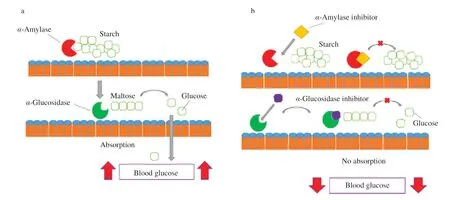
Fig. 10 Role of α-amylase and α-glucosidase inhibitors in controlling postprandial hyperglycemia. (a) Hydrolysis starch and release of glucose and its absorption led to elevation of blood glucose level; (b) α-amylase inhibitors may limit the hydrolysis of starch by blocking the active centers of the enzymes. α-Glucosidase inhibitors reduce the hydrolysis of carbohydrates and glucose absorption, leading to a decrease in postprandial elevation of blood glucose level.
4.1 Berries
Raspberry phenolic extract exhibits antioxidant properties and acts as an inhibitor on digestive starch enzymes, such asα-amylase orα-glucosidase. Zhang et al. [134] identified ellagic acid, cyanidin diglucoside, pelargonidin-3-rutinoside, and catechin,which exhibited potent inhibition onα-glucosidase, but no effect againstα-amylase. Red currants inhibitα-amylase more efficiently than black currants (containing higher anthocyanin levels). This indicates that anthocyanins are not essential for amylase inhibition [135]. The inhibitory components in raspberry onα-amylase are ellagitannins [38].Purified ellagitannins from strawberries also possess inhibition onα-amylase. Strawberries show high inhibition onα-glucosidase and low inhibition onα-amylasein vitro[136]. McDougall et al. [38]investigated polyphenol-rich berry extracts for their inhibition onα-amylase andα-glucosidase. Results showed that the inhibition ofα-glucosidase was associated with the contents of anthocyanins.Blueberry and blackcurrant extracts are the most effectiveα-glucosidase inhibitors (highest in anthocyanins), while strawberry and raspberry extracts contain high amounts of soluble tannins and are most effective inhibitors ofα-amylase. Removed of tannins from strawberry extracts by gelatin, the inhibitory ability disappears. The anthocyanins of blackcurrant, blueberry, and blue honeysuckle fruit extracts act asα-glucosidase inhibitors [59]. The other study shows that cranberry-enriched cheese exhibits inhibition onα-amylase andα-glucosidase when compared with herb, fruit, and fungal-enriched cheeses [137]. According to Liu et al., Chinese bayberry extract possessed potentα-amylase andα-glucosidase inhibitory activities,and flavonoids were the main contributors to itsin vitrohypoglycemic action [138].
4.2 Whole cereals
Whole grains contain soluble and insoluble fibers, inulin,β-glucan,resistant starches, and non-carbohydrate functional components,including carotenoids, phytates, phytoestrogens, and phenolic acids(ferulic acid, vanillic acid, caffeic acid, syringic acid,p-cumaric acid) [139]. Bioactive compounds of whole grains effectively regulate glycemic response, enhance insulin sensitivity and insulin secretion,and improve pancreatic β-cell functions [140]. The soluble and bound phenolics of whole cereals and their milled fraction show inhibitory activities ofα-amylase andα-glucosidase in a dose-dependent manner [141].Numerous studies show that the phenolic compounds such as phenolic acids, tannins, anthocyanins, and flavonoids from corn,rice, barley, sorghum and millet are potent inhibitors ofα-amylase andα-glucosidase [142-147]. Shobana et al. [148] established that phenolic compounds from millet seeds, naringenin, kaempferol,luteolin glycoside, apigenin, (+)-catechin/(-)-epicatechin,daidzein, caffeic acid, ferulic acid, and syringic acid were the carbohydrate-hydrolyzing enzymes inhibitors. Quercetin, ferulic, andp-coumaric acids show high suppression onα-glucosidase [35,69].Mishra et al. [149] displayed that organic rye varieties (containing higher of ferulic acid) show higher inhibition onα-amylase, while traditional rye varieties (containing higher of catechin) show higher inhibition onα-glucosidase. Rosén et al. [150] confirmed that high contents of fiber in rye could reduce the digestion and absorption of dietary carbohydrates. Moreover, due to the fermentation of the soluble fiber of rye in the colon, the number of metabolites increased,which effectively stimulated the secretion of insulin by β-cells.Whole rye shows a lower rate of starch hydrolysis. Bioactive rye compounds (phenolic acids, tannins, benzoic acid, phenylalanine)show the same action as antidiabetic drugs on insulin secretion [151].Hargrove et al. [152] showed that the extract of sorghum bran (rich in proanthocyanidins) possessed a more substantial inhibition onα-amylase than sorghum bran extract without proanthocyanidins.
4.3 Fruits and vegetables
Li et al. [41] experimentally showed the suppressing effect of persimmon tannin onα-glucosidase and its role in reducing postprandial blood glucose levels in the rat model. The polyphenols of potato tubers may act asα-glucosidase inhibitors. The contents of polyphenols and anthocyanins in red and purple potato tubers are higher than white and yellow tubers. The main bioactives of potato extract are chlorogenic acid and its isomers [153]. Potato phenolic extracts are rich in anthocyanins and chlorogenic acids (519, 425,and 157 mg/100 g dry weight) for purple, red and white varieties,respectively. Potato phenolic extracts significantly lower the rate of glucose transport across Caco-2 human intestinal cell monolayers,but no significant effects on starch digestion. Intake of purple potato chips significantly reduces blood glucose after 30 and 60 min of consumption instead of white chips in human [153,154].In vitrostudy also shows that the leaves and fruits of avocado inhibit bothα-amylase andα-glucosidase in a dose-dependent manner [155].
4.4 Legumes
Beans contain a large amount of fiber, phytate, omega-3 fatty acids, antioxidants, phenolic compounds and show hypoglycemic properties by inhibitingα-amylase andα-glucosidase [156]. In a randomized cross-over trial, the inclusion of beans (pinto, dark red kidney, black beans) in the diets for T2DM patients effectively down regulates postprandial glycemic response [157].
4.5 Macroalgae
Marine macroalgae contains bioactive natural substances such as polyunsaturated fatty acids, polyphenol, sterols, proteins,sulfated polysaccharides, antioxidants, and pigments [158,159]and possess antidiabetic, antioxidant, antibacterial, and antivirals properties [160,161]. Marine macroalgae is natural inhibitor ofα-glucosidase andα-amylase and could be used as hypoglycemic foods [162]. Extract ofPelvetia babingtoniiexhibits potent suppression onα-glucosidase [163]. Extract from brown alga is a rich source of polyphenol, which inhibits onα-glucosidasein vitroand effectively suppresses the rise of plasma glucose and lipid metabolism in diabetic KK-Ay mice. Phlorotannins are determined as bioactive compounds in brown macroalgae [164,165]. Phlorotannins fromEcklonia kuromereduce postprandial glucose levelsin vivoand inhibit carbohydrate-hydrolyzing enzymesin vitro[166]. Dieckol and diphlorethohydroxycarmalol are phlorotannins isolated fromEcklonia cavaandIshige okamurae, which suppress the activities ofα-glucosidase andα-amylase, alleviates postprandial hyperglycemia, and improve insulin sensitivityin vivo[39,40]. Red macroalgae contains the bromophenols, which possess inhibition onα-glucosidase [167].
4.6 Coffee
A three-way, randomized, crossover study of healthy subjects indicates that chlorogenic acid in coffee lowers the glucose absorption [68].
5. The effects of polyphenols on glucose transport
α-Amylase andα-glucosidase are the primary enzymes involved in the digestion of dietary carbohydrates. In the human body, starch is digested by salivaryα-amylase and then pancreaticα-amylase [168].Further digestion is in the small intestine byα-glucosidase, which hydrolyzes the digestive products ofα-amylase into absorbable monosaccharides in the brush-border surface of the epithelial cell. Inhibition ofα-glucosidase slows down starch digestion and suppresses postprandial hyperglycemia [169].
The primary transporters for glucose in the small intestine are sodium-dependent glucose transporter 1 (SGLT1) and glucose transporter 2 (GLUT2), but the leading transporter for fructose is glucose transporter 5 (GLUT5). SGLT1 is constantly located in the brush border membrane at the apical side of enterocytes [170].GLUT2 is a facilitative transporter accountable for glucose absorption in the gut, especially at high glucose concentrations. GLUT2 is quickly moved to the apical membrane within a few minutes in the presence of high glucose concentrations [171]. As a result of absorption or at the end of the meal, the glucose concentration diminishes, and the GLUT2 moves away from the apical membrane and waits for the subsequent incidence of high glucose.
Diabetes can lead to GLUT2 permanently located at the apical membrane, resulting in raised and unregulated glucose absorption,typical of the insulin-resistant state [171]. Glucose obtained either from the digested starch and disaccharides in the intestinal lumen is moved through the enterocyte into the blood by glucose transporters,like SGLT1, GLUT2. In this way, the postprandial blood glucose level increases. Then, blood glucose is delivered into tissue cells, such as liver and muscle cells, under insulin promotion. In this process, the glucose in the blood is transported by glucose transporters, such as GLUT4. In this way, blood glucose content is gradually reduced to the normal level [172]. Inhibition of transporters responsible for glucose moved from the intestinal tract could substantially impact postprandial hyperglycemia [173]. Most studies confirm that polyphenols suppress the glucose uptake of intestinal cells (Caco-2 cells) through potential inhibition of glucose transporters, like SGLT1 and GLUT2 [174-181].
On the other hand, dietary polyphenols indicate opposite functions. Anthocyanins from berries and isoflavones from soy increase the glucose transport into muscle cells through stimulating GLUT4 expression. Scopoletin stimulate GLUT4 translocation to the membrane in 3T3-L1 adipocytes. Moreover, EGCG increases the glucose transport into liver cells (HepG2 cells). Thus, the induction of glucose transport into these tissue cells decreases the blood sugar level [24,101,182,183].
Consequently, the impacts of dietary polyphenols on glucose transport includes two ways: suppressing glucose transport into intestinal cells from the intestine lumen and stimulating glucose transport into other tissue cells from the blood. All these aspects are helpful to control postprandial blood glucose levels (Fig. 11).
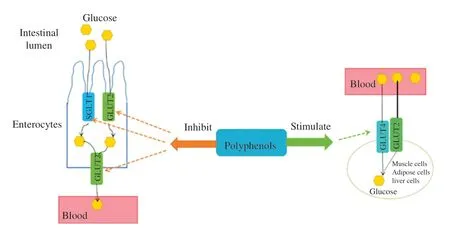
Fig. 11 Mechanism of action dietary polyphenols on glucose transport.
6. The effects of polyphenols on dipeptidyl peptidase-4 inhibition
The gastrointestinal tract has a primary role in controlling postprandial blood glucose levels. The intestine secretes hormones incretins, which are a group of metabolic hormones which have an insulinotropic action [184]. The intestinal incretin hormones GLP-1 and GIP are released during absorption of meals and stimulate pancreatic β-cells to secrete insulin. Incretin hormones constitute over 50% of postprandial insulin secretion in healthy individuals [185].Moreover, GLP-1 stimulates glucose-dependent insulin secretion,represses glucagon, slows gastric emptying, increases satiety, and decreased food intake [186,187]. GIP promotes the proliferation of β-cell and inhibits apoptosis, this leads to growth of the pancreatic β-cell mass [188]. DPP-4 rapidly breaks down both GLP-1 and GIP. Therefore, inhibition of DPP-4 increases the concentration of both hormones, and then decreases blood glucose by stimulating insulin secretion and repressing glucagon secretion. Thus,inhibition of this enzyme promotes glycemic control and prevents hyperglycemia [20,189]. Inhibition of DPP-4 is confirmed to be a successful and safe therapy for the treatment of T2DM in the last decade [190]. The hypoglycemic effects of DPP-4 inhibitors are shown in Fig. 12.
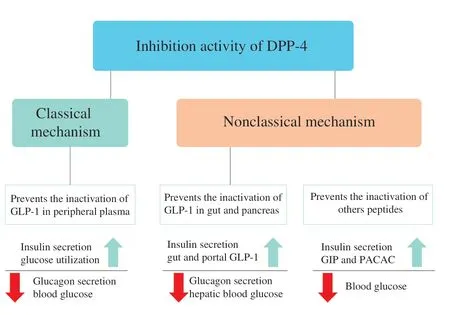
Fig. 12 The inhibition of DPP-4 on the glucose-lowering effect by classical and nonclassical mechanisms.
In the classical mechanism, DPP-4 inhibitors repress DPP-4 in peripheral plasma, which prevents the inactivation of circulating intact GLP-1 and increases the circulating concentration [191].Thus, it could improve insulin secretion and impede glucagon secretion, increasing glucose utilization and reducing blood glucose concentration [192]. In the nonclassical mechanism, GLP-1, is expressed in other tissues like the gut and pancreas. DPP-4 inhibitors from functional foods repress DPP-4, prevent inactivation of intact GLP-1 and raise the hormone concentration in tissues. This could increase the gut and portal GLP-1 receptor concentration and lower the hepatic blood glucose level [193]. Except for GLP-1, some peptides also serve as the substrate of DPP-4, including GIP and pituitary adenylate cyclase-activating polypeptide (PACAC) [194].The presence of DPP-4 inhibitors lowers the inactivation of these peptides, thereby increasing the concentration of intact GIP and PACAC. Thus, it could stimulate insulin secretion and reduce blood glucose concentration.
6.1 Berries
Aronia (chokeberry) is rich in polyphenols such as procyanidins,anthocyanins, and phenolic acids. The identification and characterization of DPP-4 inhibitors from the aronia juice (black chokeberry) were investigated. Resultsin vitroshow that DPP-4 is inhibited by cyanidin 3,5-diglucoside (present in aronia juice) [60].
6.2 Spices
Rosmarinus officinalis(rosemary) is an herb with fragrant,evergreen, and needle-like leaves. It is a spice used as a natural antioxidant and possesses antidiabetic activity [195,196]. Methanol extract ofR. officinalisleaves strongly inhibits DPP-4 [31]. Several compounds are identified, such as carnosic acid, carnosol, rosmarinic acid, caffeic acid, and hesperidin [197].
6.3 Legumes
Phaseolus vulgaris(bean or kidney bean) rich in phenolic compounds (malvidin-3-glucoside, petunidin-3-glucoside, dephinidin-3-glucoside, and dephinidin-3,5-diglucoside were isolated) reduces the risk of chronic diseases such as cancer, diabetes mellitus, and obesity [198]. Anthocyanin-rich extract of black bean exhibits mild inhibition on DPP-4 (34.4%), while malvidin-3-glucoside and dephinidin-3-glucoside show 82.4% and 78.8% inhibition on this enzyme [61].
7. Effect of polyphenols on insulin secretion
Prolonged hyperglycemia and hyperlipidemia lead to the dysfunction of the pancreatic β-cells, reflected in insulin resistance,impaired insulin secretion, and decline in β-cell mass induced by apoptosis [26]. Insulin secretion from β-cells is numerous reactions,which are potential targets for the action of polyphenols and starting from the uptake of glucose into the cytoplasm by the GLUT2 [199].Glucose is further phosphorylated to produce pyruvate, which is transported into mitochondria, leading to the production of adenosine triphosphate (ATP) [200]. Raised glucose uptake by pancreatic β-cells caused an expansion in metabolism. The enlargement in metabolism leads to an elevation in the ATP/adenosine diphosphate ratio and the closure of the cellular K+-ATP-channels, which induces cell membrane depolarization and the opening of Ca2+channels [201].The influx of Ca2+raises cytosolic Ca2+concentration, which leads to insulin secretion to the blood [202] (Fig. 13).
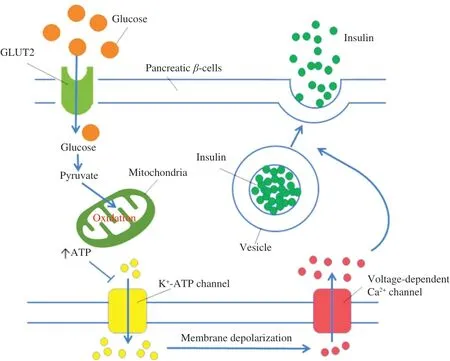
Fig. 13 Mechanism of glucose-stimulated insulin secretion.
7.1 Soy
Soy, especially its isoflavonoids, genistein, and daidzein, have shown a positive impact on β-cell function and insulin secretion.Genistein or daidzein (0.2 g/kg) were intakes by non-obese diabetic mice for nine weeks. During intervention time preserved the insulin production by the β-cells, compared with mice fed the control diet had no insulin production [51]. Kim et al. [52] similarly showed that in non-obese mice (streptozotocin (STZ)-induced diabetic model) fed with fermented soybean (5 g/100 g of diet for six weeks), the insulin concentration in the pancreas was higher than in the non-treated control mice. The same line in results was obtained by Lu et al. [27]on high-isoflavone soy protein-fed STZ-diabetic rats. Genistein improves glucose-stimulated insulin secretion in INS-1E pancreatic cells. Moreover, the genistein treatment elevated cellular Ca2+levels,suggesting that the improvement in insulin secretory function may be attributable to modulation of Ca2+signaling [28].
7.2 Phenolic acids
Many studies were conducted on the effects of dietary phenolic acids on pancreas function in cell culture and animal models.
Phenolic acids are present in various plant sources such as fruits, vegetables, spices, berries and grains [63]. Quinic acid is found in coffee, bilberry, cranberries, sea buckthorns, and kiwifruit.Heikkila et al. [203] found quinic acid to modulate intracellular Ca2+homeostasis and to activate Ca2+-dependent mitochondrial function that enhances insulin exocytosis in a model of insulin-secreting beta-cells (INS-1E). Cinnamic acid is found in many dietary plants,fruits, and herbs [71]. Cinnamic acid at 50-100 µmol/L significantly enhanced glucose-stimulated insulin secretion in isolated mice islets [72]. Vanillic acid is found abundantly in vanilla beans [204].Vanillic acid raises glucose-stimulated insulin secretion in both insulin-secreting cell-line INS-1 and isolated rat pancreatic islets. In addition, vanillic acid-induced K+-ATP channel inhibition depolarizes pancreatic β-cells resulting in increased intracellular Ca2+levels and insulin exocytosis [73].
7.3 Fruits, berries
Quercetin is a compound in onions, chokeberries, black currant,apples, and cherries [205]. Quercetin stimulation increases basal oxygen consumption rate, maximal respiration, and ATP-linked oxygen consumption rate in pancreatic β-cells [206], suggesting that this compound helps to raise the ATP/ADP ratio and serves as a mechanism and signal to induce insulin secretion. Moreover,
a study on INS-1 cell line and rat isolated pancreatic islets
suggests that quercetin stimulates insulin secretion by increasing Ca2+influx through interaction with L-type Ca2+channels [36].Sun et al. [62] determined purple potato extract (enriched in anthocyanins) stimulated insulin secretion in mouse islet beta cells (INS1) by upregulating the expression of intracellular Ca2+signaling pathway and glucose transport-related gene (GLUT2).Randomized, double-blinded, placebo-controlled, crossover trial included 46 middle-aged, overweight men who were randomized to receive capsules with olive leaf extract (51.1 mg oleuropein, 9.7 mg hydroxytyrosol per day) or placebo. After 12 weeks of intervention,the action of insulin and secretion from pancreatic β-cells were improved when compared with the placebo group [207].
8. Effect of polyphenols on gluconeogenesis pathways
The liver plays a significant role in regulating blood glucose levels and stores glucose as glycogen via glycogenesis. The liver produces glucose in two ways, either by breaking down glycogen(glycogenolysis) or synthesizing glucose from metabolites such as pyruvate, lactate, glycerol, and amino acids (gluconeogenesis).The key enzymes responsible for the regulation of glycogenesis are glucokinase (GK) and glycogen synthase kinase (GSK). The crucial enzymes accountable for gluconeogenesis regulation are pyruvate carboxylase, PEPCK, fructose-1,6-bisphosphatase, and G6P [208].In T2DM and insulin resistance, the control of hepatic glucose metabolism is disturbed, and the liver cannot respond to insulin,resulting in increased hepatic glucose output and hyperglycemia [22].In hepatocytes, raised free fatty acid levels lead to ectopic fat deposition, which inhibits IRS2-associated the PI3K/Akt pathway activation and GLUT2 expression, lowering insulinstimulated glucose uptake (insulin resistance) [209]. Ectopic fatinduced inhibition of Akt/PI3K diminishes the phosphorylation of forkhead box protein O1 (FOXO1), which, as a result, activates the transcription of G6P and PEPCK, the rate-limiting enzymes for gluconeogenesis [210]. It promotes gluconeogenesis and decreases GK and GSK, activation that represses glycogen synthesis. The resulting raised hepatic glucose production leads to hyperglycemia [32,209]. (Fig. 14).

Fig. 14 Mechanism of hepatic insulin resistance.
In vitroandin vivostudies confirmed that flavonoids decline PEPCK and G6P expression, suppressing gluconeogenesis and improving GK and GSK expression, stimulating glycogen synthesis.
8.1 Cinnamon
Cinnamon extract (500 and 300 mg/kg) effectively decreased fasting blood glucose in diet-induced hyperglycemic mice before and after treatment. Cinnamon extract reduced the gene expression of two primary regulators of hepatic gluconeogenesis, PEPCK and G6P [211]. Studies by Chen et al. [212] investigating the effects of oral administration of procyanidins from two different cinnamon speciesCinnamomum cassiaandCinnamomum tamalaon glucose metabolism using 8-week-old diabetic (db/db) mice gavaged once daily with the vehicle procyanidins (200 mg/kg per day).After 4 weeks, glucose tolerance, insulin resistance, and hepatic gluconeogenesis were improved by suppressing pro-inflammatory cytokine expression.
8.2 Germinated brown rice
The diabetic rats (fasting plasma glucose of ≥ 250 mg/dL after 2 days of STZ) accepted germinated brown rice for 28 days. Germinated brown rice suppressed gluconeogenic genes similar to metformin but produced better glycemic control in type 2 diabetic rats [213].
8.3 Fruits, vegetables, berries
Fructus Corni (Cornus officinalis) extract and phenolic fractions lower gene expression for hepatic gluconeogenesis, protect β-cell against toxic challenge and improve insulin secretion in H4IIE cells [214]. Naringin and hesperidin from citrus promote glycogen synthesis and reducing the expression of PEPCK and G6P,repressing gluconeogenesis in type 2 diabetic mice [32]. Moreover,grape seed extract flavanols improve hepatic insulin resistance by raising the activity of GK, promoting glycogen synthesis in highfat-fed mice [47]. Proanthocyanidins (from cacao, black soybean seed coat, grape seeds) improve glucose uptake and limit glucose output, raising hepatic glucokinase activityin vitrostudies. This enzyme phosphorylates glucose to glucose-6-phosphate, thus facilitating glucose storage as glycogen and the disposal of glucose by glycolysis in human HepG2 cells [47]. In addition, these polyphenols diminish PEPCK, which catalyzes gluconeogenesis. Moreover,proanthocyanidins reduce G6P by activating AMPK and PI3K/Akt pathways [48,49]. Citrus fruits, banana, eggplant, bamboo shoots,beetroot, cabbage, spinach, and broccoli are rich sources of ferulic acid [215]. Adult male rats diabetic animals were treated with ferulic acid (50 mg/kg body weight/day). After 30 days, it was found that ferulic acid treatment in type 2 diabetic rats improves insulin sensitivity and hepatic glycogenesis but inhibits gluconeogenesis by phosphorylating FOXO1 [70]. The study by Do et al. [53] showed resveratrol significantly reduced blood glucose, blood HbA1c levels,plasma free fatty acid, triglyceride, lowered hepatic gluconeogenic enzyme activity, and hepatic glycogen in C57BL/KsJ-db/dbmice after six weeks administration of normal diet with resveratrol (0.005%and 0.02%,m/m).
8.4 Tea
Green tea polyphenolic extract at 1 or 2 g/kg 6 weeks diet raises the mRNA levels of GSK-promoting glycogen synthesis and regulates gene expression in insulin signaling pathway in rats with metabolic syndrome induced with a high-fructose diet [216]. Reduced gluconeogenesis and glucose output was observed after exposure to EGCG of H4IIE rat’s hepatic cells [217]. The study by Collins et al. [24]also assessed the role of EGCG in gluconeogenesis using hepatocytes exposed to a physiologically relevant concentration of EGCG (< 1 μmol/L). It was found that EGCG decreases glucose production by inhibiting the expression of PEPCK and G6P.
9. Polyphenols and advanced glycation end-products (AGEs)
AGEs formed through a non-enzymatic reaction (protein glycation, or Maillard reaction) as part of normal aging [218].Hyperglycemia accelerates AGE formation and therefore enhances AGE levels [219]. An accumulation of AGEs increases oxidative stress and lead to the development of various diabetic complications such as retinopathy, nephropathy, and neuropathy [220-223]. Phenolic compounds show different beneficial effects on human health,including anti-glycation. Glycation could be suppressed at different steps to AGE formation [217-226]. Formation of AGEs is shown in Fig. 15.

Fig. 15 Formation of AGEs.
The first glycation product is fast and highly reversible intermediate Schiff base (glucosamine), formed from the reaction between amino acids (from a proteins) and sugar. Then Schiff bases are converted to more stable Amadori products. Proteins bearing an Amadori product are referred to be glycated proteins or Maillard reaction products. Amadori products undergo a series of reactions,resulting in various carbonyl compounds, including methylglyoxal(MGO), glyoxal (GO), glucosones, 3-deoxyglucosone (3-DG).These carbonyl compounds act as reaction stimulators, leading to the formation of irreversible AGEs [227,228].
9.1 Sesame
Flaxseed and sesame contain high lignan contents. Sesamin is one type of lignan that is abundant in sesame oil and seeds. Sesamin shows antioxidant and anti-hypertension and lowers blood lipids [229].Sesamin inhibits the production of oxidative stress to slow down AGE-induced β-cell dysfunction and apoptosis [230].
9.2 Vegetables
Tomatoes contain polyphenols which show strong antioxidant capacity [231]. Ferulic acid,p-coumaric acid, and vanillic acid are found in the extracts of tomatoes, but chlorogenic acid is the predominant one. Moreover, other phenolic compounds such as naringenin, linocaffein, and rutin are determined. The purified extracts of tomatoes are potent inhibitors of AGEsin vitro[232].Two main phenolic compounds of green pepper (Piper nigrum)are 3,4-dihydroxyphenyl ethanol glucoside and 3,4-dihydroxy-6-(N-ethylamino) benzamide [233]. Green pepper extract shows antioxidant and anti-glycative properties and effectively decreases hydroxymethylfurfural formation. It could be used as a natural antiglycation agent [234].

?
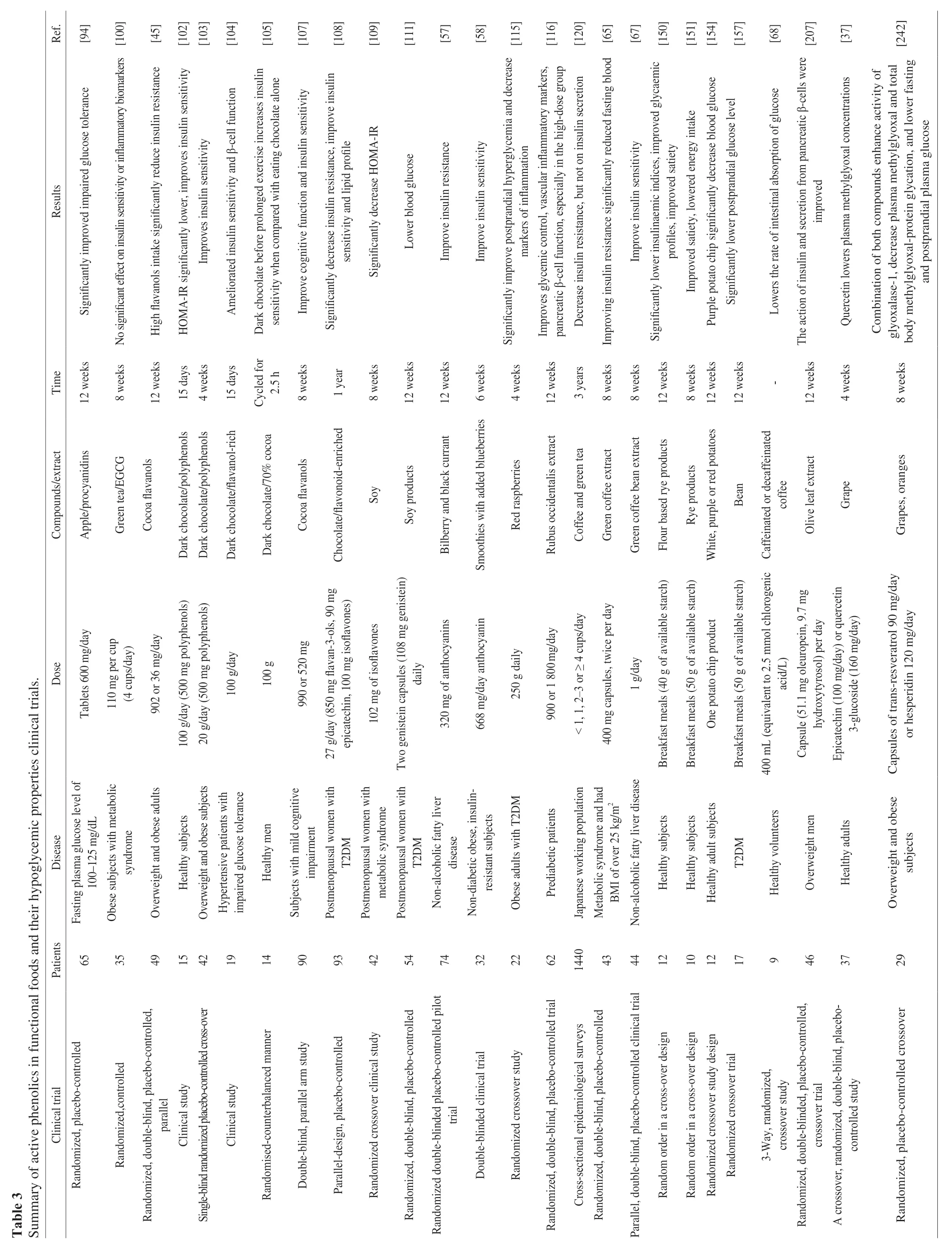
?
9.3 Sorghum
Sumac and black sorghum bran contain anthocyanins such as luteolinidin and apigeninidin [235]. Farrar et al. [236] showed that sorghum bran (sumac) slowing down the formation of AGEsin vitro.
9.4 Tea
Tea polyphenols show antioxidant effect. The main active components are catechins. Moreover, tea polyphenols may inhibit AGEs formation [237]. Diabetes mellitus mice intake tea polyphenols for eight weeks (200 mg/kg body weight), the symptoms of diabetic nephropathy are relieved. Tea polyphenols are found decrease the production of AGEs in a dose-dependent mannerin vivo[238].
9.5 Brown algae
Phenolic compounds in brown algae are well identified (dieckol,phlorofucofu-roeckol-A, catechin, gallic acid, and quercetin). Brown algae extract is a natural anti-glycative agents and dieckol is the predominant AGEs inhibitor [239].
9.6 Grape pomace
Grape pomace phenolics are mainly composed of proanthocyanidins, anthocyanins, flavonols and, some minor phenolic acids and stilbenes [240]. Grape skin polyphenolics show more effective anti-glycation than the synthetic inhibitor aminoguanidinein vitro[241]. A crossover, randomized, double-blind, placebo-controlled study is conducted with 37 healthy adults for four weeks intake of epicatechin (100 mg/day) or quercetin 3-glucoside (160 mg/day)(both are abundant in grapes) or placebo capsules. Results show that quercetin lowers plasma methylglyoxal concentrations [37]. In the other study, 29 overweight and obese subjects consume transresveratrol (90 mg/day) (which is detected in grapes) and hesperidin(120 mg/day) (which is present in oranges) or placebo capsules for eight weeks. Results confirm that the combination of both bioactive compounds enhance the expression and activity of glyoxalase-1,decrease plasma methylglyoxal and total body methylglyoxalprotein glycation, and lower fasting and postprandial plasma glucose.However, trans-resveratrol or hesperidin used along does not show the effect [242].
Functional foods and their bioactive compounds could reduce carbohydrate metabolism and hyperglycemia, improve pancreatic β-cell function and insulin secretion as well as insulin resistance,reduce the formation of AGEs and inhibit DPP-4. Active phenolics in functional foods and their hypoglycemic properties are summarized in Table 1, Table 2 and Table 3.

Table 1Summary of active phenolics in functional foods and their hypoglycemic properties in vitro.
10. Toxicity of polyphenols
Most functional foods contain polyphenols, which show antioxidant activities for health promotion and disease prevention. But some studies show toxicity of high intake of the phenolic compounds[243-245]. Green tea polyphenols (GTPs) possess anti-oxidation, antiinflammation, anti-cancer, and other beneficial functions [246-248]. On the other hand, the toxicity is revealed at high dosage due to the prooxidative properties. High doses (0.5%-1.0%) of dietary GTPs show intestinal inflammation, liver and kidney dysfunction and colorectal cancer in mice. In contrast, low and medium doses (0.01%-0.25%)exhibit beneficial effects in the large intestines, livers, and kidneys [243].High dosage of GTPs impair the development and reproduction of Drosophila melanogaster, negative impact on reproductive organs in both males and females (atrophic testes in males, absence of mature eggs in females) and a decrease in reproductive output and survival of female [249]. Grape seed polyphenols exhibit various biological properties. Mice spleen cells pre-incubated with procyanidin B4, catechin, gallic acid show perfect antioxidation at lower concentrations and could prevent oxidative damage to cellular DNA induced by hydrogen peroxide (H2O2). However, high concentrations(150 μmol/L) of catechin cause cellular DNA damage in mice spleen cells [250]. Ugartondo et al. [251] showed adverse effects in fibroblast (3T3) and keratinocyte (HaCaT) cell lines after exposure to high concentrations of grape epicatechin for 24 h or more. Moreover,the compounds with a gallate group exhibited more potential toxicity than those without the gallate group. Ziberna et al. [252]reported anthocyanins to exhibit cardioprotective activities in low concentrations of bilberry anthocyanins (0.01-1 mg/L).However, high concentrations of anthocyanins (5-50 mg/L)decreased cardioprotection and showed cardiotoxic to rat heart under ischemia-reperfusion conditions. Soy isoflavones such as genistein can permeate the tubal epithelium and alter the luminal secretion of amino acids in fallopian tubes [253]. High dose of genistein during embryonic development and lactation periods lead to morphological changes in the mammary glands of the male offspring modified reproductive functions, including steroidogenesis, spermatogenesis,and fertility, in adult Wistar rats [254,255]. Genistein (36 μmol/L)inhibits the growth of mouse antral folliclesin vitro. Patel’s results showed that genistein influenced hormone levels, increased progesterone, testosterone, and dehy-droepiandrosterone, and decreased the estradiol estrone levels. Genistein-induced changed hormone levels, and repression of antral follicle growth could lead to various health risks and female infertility [256]. Infant girls (less than nine months) fed soy formula alters DNA methylation in vaginal cell DNA [257].
11. Conclusion
In vitroandin vivostudies clearly demonstrate that dietary polyphenolic compounds improve glucose homeostasis through multiple mechanisms in the liver, muscle, adipocytes, and pancreatic β-cells. Overall, most human trials show that dietary polyphenols are associated with a lowering risk of hyperglycemia. However, further clinical trials are needed to confirm the bioavailability and efficacy of these active phenolics.
Conflicts of interest
There are no conflicts to declare.
Acknowledgments
This review was not supported by any funding body.
杂志排行
食品科学与人类健康(英文)的其它文章
- Emerging natural hemp seed proteins and their functions for nutraceutical applications
- A narrative review on inhibitory effects of edible mushrooms against malaria and tuberculosis-the world’s deadliest diseases
- Modulatory effects of Lactiplantibacillus plantarum on chronic metabolic diseases
- The role of f lavonoids in mitigating food originated heterocyclic aromatic amines that concerns human wellness
- Insights on the molecular mechanism of neuroprotection exerted by edible bird’s nest and its bioactive constituents
- Flowers: precious food and medicine resources
